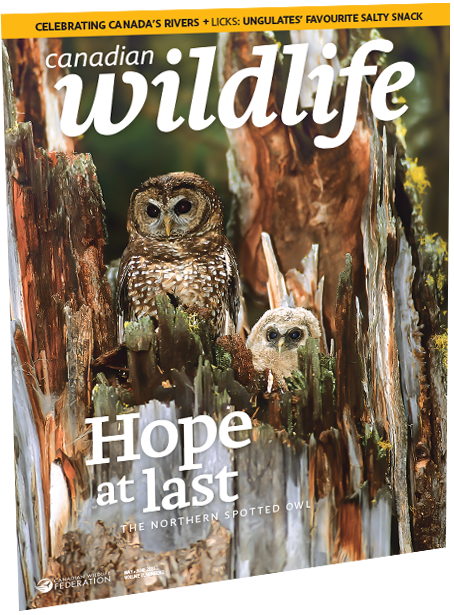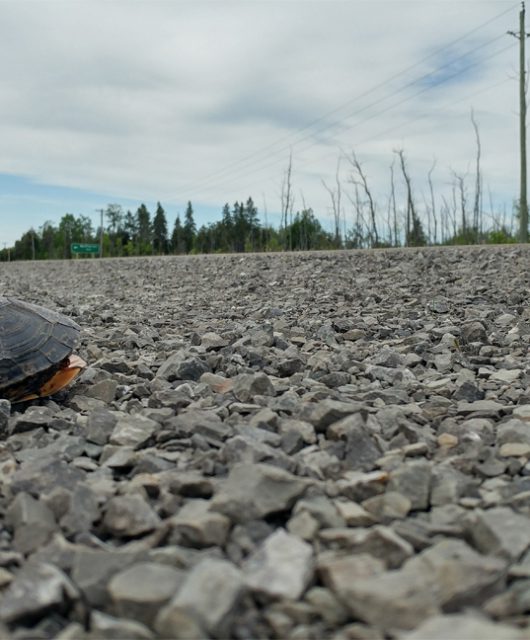For four decades, there has been a divisive debate about the lasting effects of disturbing animal habitats. A new study suggests it will make some species more resilient, not less.
THE DREAM OF UNTOUCHED WILDERNESS, WHERE animals roam at will, has been a cherished ideal of nature-lovers for as long as I can remember. Many environmental campaigns are based on the idea that we must preserve as many pristine tracts of land as possible for the sake of biodiversity, keeping out the roads and the loggers and the hunters.
In fact, it seems intuitive that wildlife will thrive in places where humans can’t go. The flip side feels correct, too: as humans carve up the remaining patches of landscape, animals will suffer greatly.
But while the loss of habitat is, in itself, one of the main causes of biodiversity loss worldwide, the role of fragmentation — cutting up the bits that are left — is disputed. Who knew?
Actually, it’s been a sore point for 40 years as studies from around the world on fragmented habitats have rolled in. Some show that slicing up the remaining bits of habitat is awful for wildlife. Some don’t. The latter tend to be in regions at higher latitudes. For example, despite the dramatic changes humans have wrought on the landscapes of Europe and eastern North America in recent centuries, there have been relatively few outright extinctions.
It leads to a great puzzle: is there a global pattern to the effects of fragmentation that can shape conservation plans? To find out, an international team of scientists led by Matthew Betts of Oregon State University reviewed the issue in a paper published recently in the journal Science, crunching numbers from 73 sets of data from all over the world representing more than 4,000 forest-dwelling animal species. They focused on forests because 70 per cent of the Earth’s remaining forest is within one kilometre of the forest’s edge. Plus, fragmentation is forecast to speed up in tropical forests over coming decades.
The scientific team looked at all the data through the lens of a concept known as the extinction filter hypothesis. It predicts that species that have endured vast disruptions over many millennia have evolved to withstand further disturbances. Those include the ones humans now inflict, such as logging, hunting and burning, as well as natural catastrophes from eras past, such as hurricanes, glaciation and wildfires. All those calamities lead to life on the edge — whether it is the edge of a forest or of a scoured or scorched landscape.
Essentially, it is a test of resilience. Species that can’t adapt to life under changeable conditions die out. Those that can adapt live on.
The study found that disturbance breeds resilience. The more an area had been exposed historically to catastrophe, the better suited its species were to further catastrophes. In fact, species that reacted badly to fragmentation were three times more common in areas that had been relatively untroubled over time than in areas where disturbances were frequent. It was particularly true for birds and arthropods such as spiders and insects.
What does it mean? Weirdly, that the march and then retreat of glaciers over temperate zones and the hurricanes and wildfires that ripped through landscapes many thousands of years ago prepared some of the world’s species for the ravages of humanity. Some of the ones that couldn’t adjust simply disappeared from the planet’s DNA.
IN AREAS WHERE CREATURES WERE ALREADY INURED TO CHANGE, SUCH AS CANADA, SPECIES ARE MORE NIMBLE THAN WE KNOW
It also means, again, weirdly, that humans are not solely responsible for the way species have reacted to our cutting down forests and fragmenting what’s left — at least in areas where creatures were already inured to change. These include the higher latitudes, such as Canada, where glaciers came before us, forcing species to adapt. They’re more nimble than we know, those northern critters.
Looked at through this extinction filter, a few points seem apparent to the study’s authors. The first is that species in tropical forests, which have historically experienced less natural calamity, are also therefore more apt to be harmed by the fragmentation now being planned through large-scale logging. That means efforts to prevent forest fragmentation, and therefore species loss, should focus on the tropics, particularly on areas with the greatest biodiversity.
In higher latitudes, such as Canada, where fragmentation is not as damaging because species have dealt with it for millennia, the conservation focus should be on preserving old-growth forests even if they are carved up.
There is a major caveat going forward: The studies didn’t take into account the effects of the climate crisis. Because it is happening so fast, climate change could strip some species of the resilience they have developed over the millennia, pushing them to a new edge of survival. In other words, even the most severely tested animals may not be able to withstand what humans have unleashed on the planet.

Reprinted from Canadian Wildlife magazine. Get more information or subscribe now! Now on newsstands! Or, get your digital edition today!





3 comments
Thanks I enjoy your emails
I am fed up with all that talking.
I have been trying to buy milkweed for monarch butterflies for years. No avail. Recently you made a deal with Home Depot – it is in the catalog – but still no avail in reality.
I ordered seeds in the US. I am trying to grow them from seeds – it is quite difficult. Eventually i may have some limited success, but not yet. I drove 50 km to nursery that had some plants, but when i got there all were sold out.
Why is so difficult to get some useful plants for endangered insects? There are so many environmental organization talking about bees and butterflies asking for donations. I feel that they don’t do a good job.
Adam Stefanski
I will probably conclude that this research is useless albeit interesting because it does not take into account climate change and its effects. Thx.